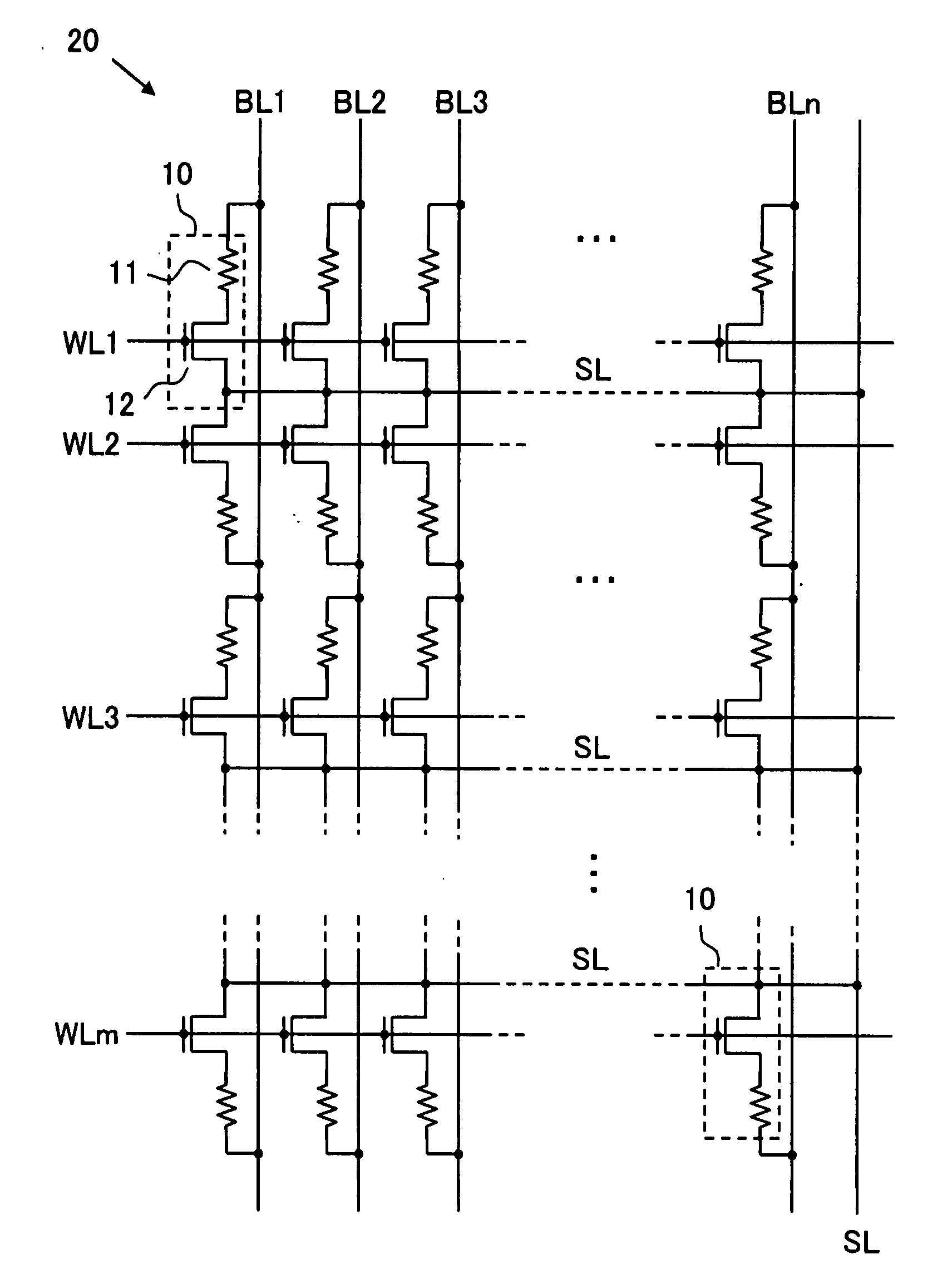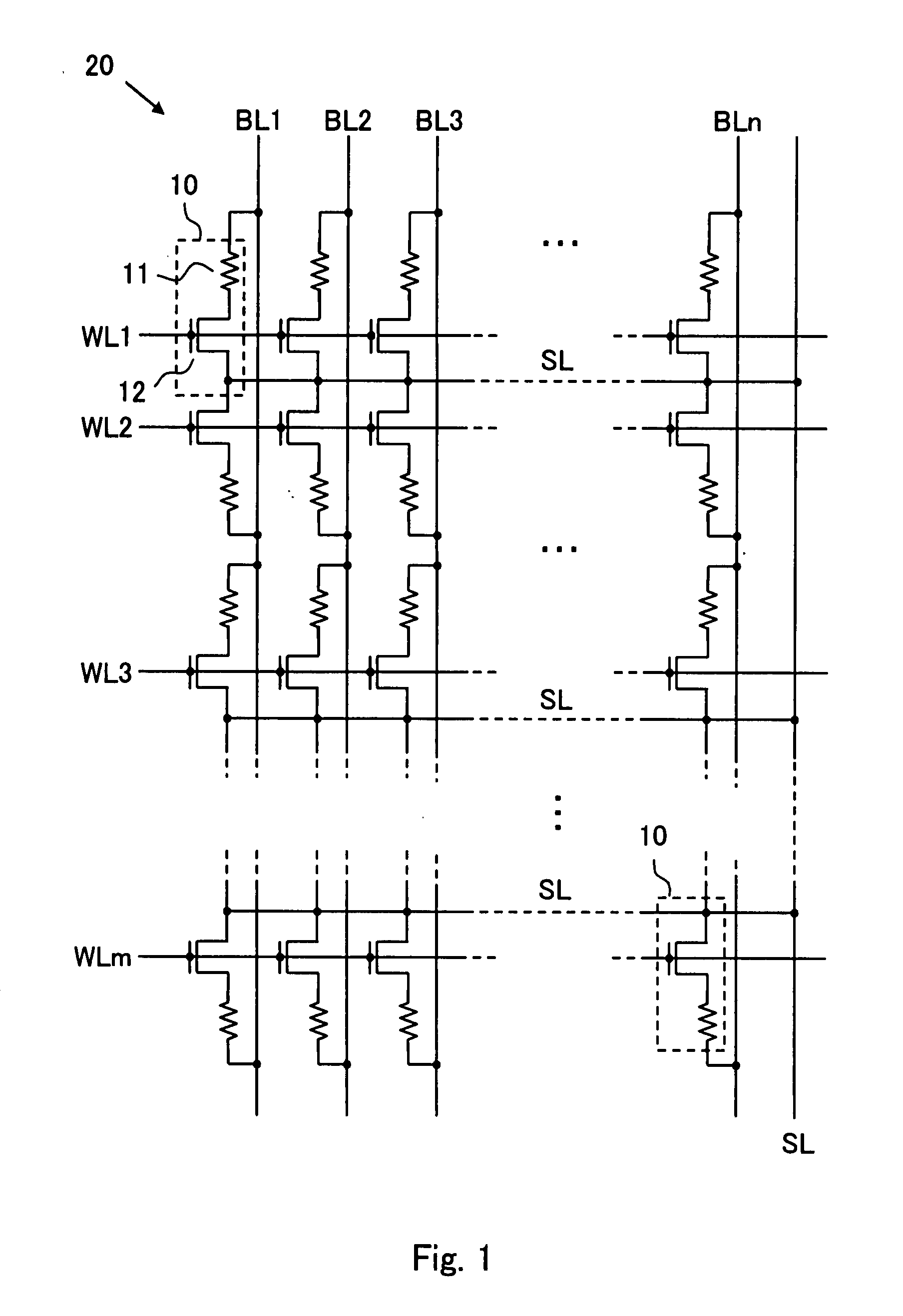Semiconductor memory device
a memory device and semiconductor technology, applied in the direction of information storage, static storage, digital storage, etc., can solve the problems of increasing power consumption, unable to apply voltage +3v to the bit line at the time of programming, and unable to apply it to the variable resistance element through the cell access transistor, etc., to achieve the effect of simplifying the manufacturing steps of the semiconductor memory device and reducing the manufacturing cos
- Summary
- Abstract
- Description
- Claims
- Application Information
AI Technical Summary
Benefits of technology
Problems solved by technology
Method used
Image
Examples
Embodiment Construction
[0049]An embodiment of a semiconductor memory device (referred to as the device of the present invention occasionally hereinafter) according to the present invention will be described with reference to the drawings hereinafter.
[0050]As shown in FIG. 1, the device of the present invention includes one or more memory cell arrays 20 in which a plurality of memory cells 10 are arranged in row and column directions, and, to select a predetermined memory cell or a memory cell group, a plurality of word lines WL1 to WLm and a plurality of bit lines BL1 to BLn are arranged in a row and column directions, respectively and a source line SL extending in the row direction is arranged. In addition, although the source line SL extends in the row direction parallel to the word lines WL1 to WLm and it is provided in each row and connected to other source lines in common outside the memory cell array 20 in FIG. 1, the source line SL may be shred with the two adjacent rows, or it may extend in the co...
PUM
 Login to View More
Login to View More Abstract
Description
Claims
Application Information
 Login to View More
Login to View More - R&D
- Intellectual Property
- Life Sciences
- Materials
- Tech Scout
- Unparalleled Data Quality
- Higher Quality Content
- 60% Fewer Hallucinations
Browse by: Latest US Patents, China's latest patents, Technical Efficacy Thesaurus, Application Domain, Technology Topic, Popular Technical Reports.
© 2025 PatSnap. All rights reserved.Legal|Privacy policy|Modern Slavery Act Transparency Statement|Sitemap|About US| Contact US: help@patsnap.com



